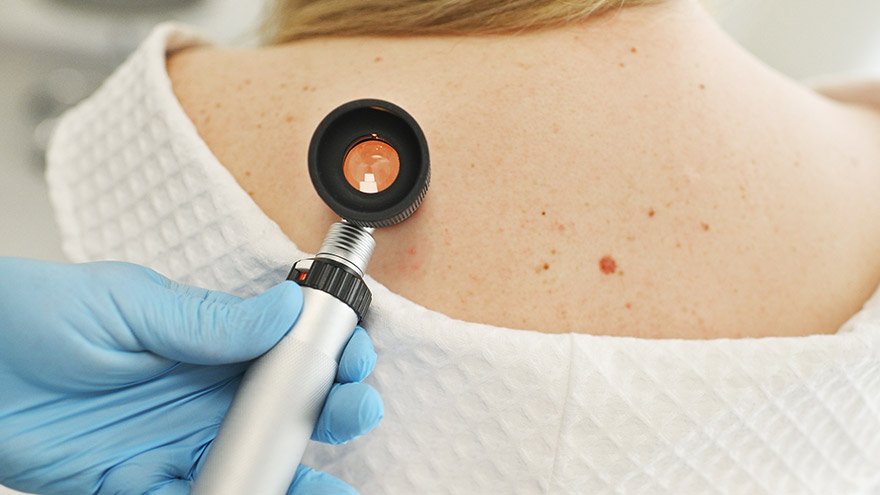
Learn to Spot Skin Cancer

With skin cancer affecting one in five Americans and 3.5 million new skin cancer cases diagnosed yearly, being proactive about prevention is vital to your health. Dr. Angela Walker, a dermatologist with Renown Dermatology, Laser and Skin Care, explains.
The 5 stages of melanoma

How should someone examine their skin for moles?
I recommend practicing monthly head-to-toe self-examination of your skin, so you can find any new or changing moles or marks that might be cancerous or precancerous. Skin cancer is the most common of all cancers. It is also the easiest to cure if diagnosed and treated early. Therefore, self-examination can alert you to changes in your skin and aid in early skin cancer detection.
Self-examination tips:
- Gather your tools: Bright light, full-length mirror, hand mirror and a blow-dryer to help part your hair.
- Face check: Examine your nose, lips, mouth and ears — both front and back.
- Scalp inspection: Use a blow-dryer and mirror to examine each section of your scalp. Consider asking a friend or family member for help.
- Hands and forearms: Carefully check your palms, backs of hands, between fingers, and under fingernails. Continue up your wrists and forearms, front and back.
- Arms and underarms: In front of the full-length mirror, start at your elbows and inspect all sides of your upper arms, including underarms.
- Neck, chest and torso: Scan your neck, chest and abdomen. Women should lift breasts to check underneath.
- Upper back: Turn your back to the full-length mirror and use the hand mirror to inspect your neck, shoulders, upper back and backs of upper arms.
- Lower back and legs (back): Continue checking your lower back, buttocks, and the backs of your legs.
- Legs, feet and toes (front and sides): Examine the front and sides of both legs from thigh to shin, as well as ankles, tops of feet, between toes and under toenails. Don’t forget your soles and heels.
Skin Cancer Screening

What should someone look for when performing this skin check?
To start, note any new moles or growths and any existing growths that begin to grow or change significantly in any other way. Lesions that change, itch, bleed, or don't heal are also alarm signals. You can use A-B-C-D-E to recognize possible signs of melanoma.
- Asymmetry: A benign mole is symmetrical. The two sides will match if you draw a line through the middle. Asymmetry is a warning sign of melanoma.
- Border: A benign mole has smooth, even borders, unlike melanomas. The borders of an early melanoma tend to be uneven.
- Color: Most benign moles are all one color — often a single shade of brown. Having a variety of colors, such as shades of brown, tan or black, or even red, white or blue, are reasons to make an appointment with your care provider.
- Diameter: Benign moles usually have a smaller diameter than malignant ones. Melanomas are generally larger in diameter than the eraser on your pencil tip (¼ inch or six milometers).
- Evolving: Benign moles look the same over time. Be alert when a mole starts to evolve or change in any way.
When is it time to see a dermatologist?
Moles are common; almost every adult has a few of them, and those with light skin often have more moles. Most moles appear on the skin during childhood and adolescence and will grow as the child grows. Some moles will darken, and others will lighten. These changes are expected and seldom a sign of melanoma. However, visit a dermatologist for a mole or patch of skin that's changed in color, size, shape, or symptom.
Annual skin exams with a dermatologist are recommended, and melanoma is highly treatable if detected early. Beyond your yearly exam, if you see any new moles or changes to existing moles, schedule an appointment with your care provider or dermatologist.
Related Blogs


5 Pro Tips for Winter Skin Care
